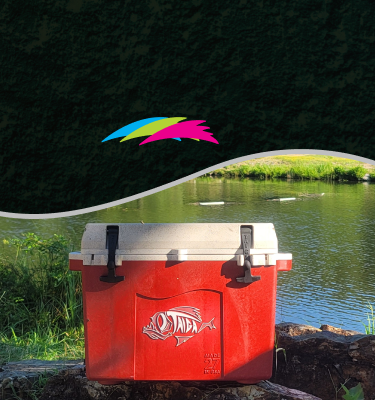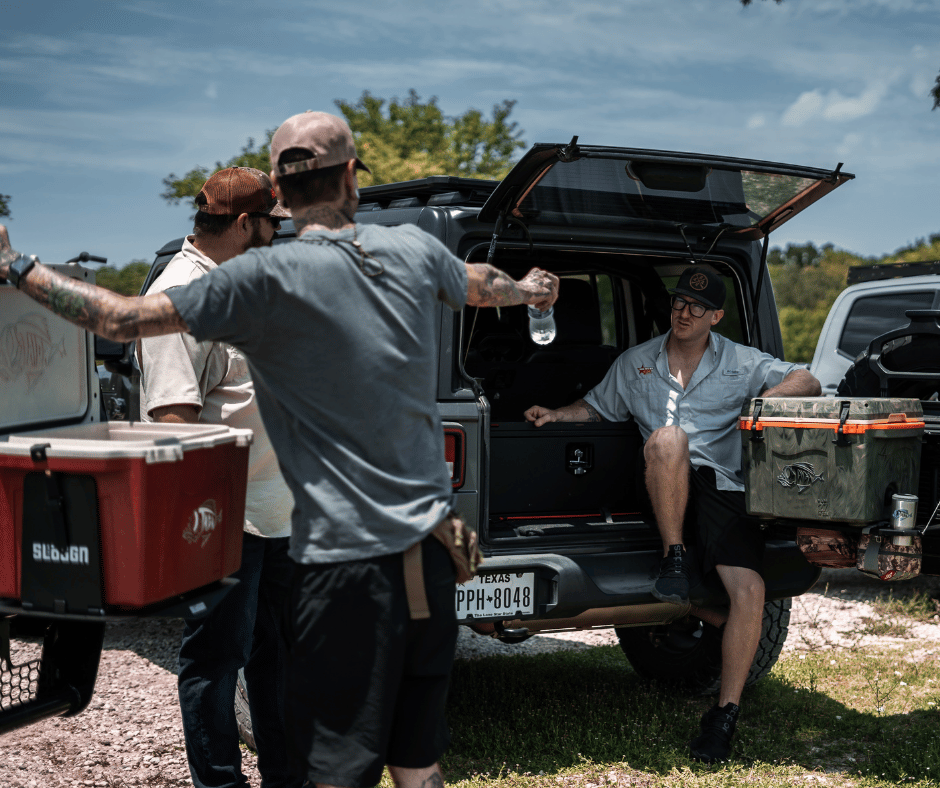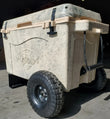How to Keep Your Cooler Lasting Longer
In today's competitive outdoor market, the longevity and performance of a cooler are critical – whether for hunting trips, corporate events, or everyday adventures. Taiga Coolers, a Texas-based manufacturer of high-performance American-made coolers, emphasizes that proper maintenance is as crucial as quality construction. This guide explores essential routines—from cleaning and insulation care to storage, ice pack usage, food safety, and maintenance tips—to ensure your cooler remains durable, efficient, and safe.
By following expert recommendations outlined below, you can prevent issues like odor buildup, physical damage, and reduced ice retention. The practical tips and succinct guidelines provided here are designed to help outdoor enthusiasts and corporate clients achieve peak cooler performance and extend product lifespan.
Let's explore these maintenance strategies step by step.
How Often Should You Clean Your Cooler to Keep It Lasting Longer?
Clean your cooler thoroughly after each use to remove food residue, prevent corrosion, and stop bacterial or mold growth. Regular cleaning protects the insulation and seals, ensuring the cooler maintains its functionality over time.
What Are the Best Cleaning Supplies for Cooler Maintenance?
Use mild cleaning agents that are safe for plastic and foam. Recommended supplies include: - Mild dish soap: Breaks down grease and food residues. - Soft-bristle sponge: Prevents scratches. - White vinegar solution: Acts as a natural disinfectant. - Baking soda: Removes stubborn stains and neutralizes odors. - Microfiber cloths: Efficiently dries surfaces to prevent moisture buildup.
These supplies help preserve the cooler’s appearance and extend its life while avoiding harsh chemicals.
How Do You Properly Clean the Interior and Exterior of a Cooler?
For the interior, empty the cooler and dispose of any leftovers. Rinse with warm water, then scrub using a mixture of mild soap and water with a non-abrasive sponge, focusing on crevices and seals. For the exterior, wipe down with a soft cloth dipped in water with a few drops of detergent. Dry both thoroughly using a microfiber towel to prevent rust and mildew.
How Can You Remove Stains and Odors From Your Cooler Effectively?
To remove stains, mix baking soda with warm water to form a paste, apply it to affected areas, and gently scrub with a soft brush. For odors, fill the cooler with equal parts white vinegar and water, let it sit for 15–20 minutes, and then rinse. For persistent smells, an open container of baking soda left overnight will help absorb odor molecules. Specialized cooler cleaning products are also available for stubborn issues.
What Are the Recommended Drying and Storage Practices After Cleaning?
After cleaning, leave the lid open in a well-ventilated space to allow complete drying. Wipe any remaining moisture with a dry microfiber towel. Once dry, store your cooler in a cool, shaded, and dry area—off the floor if possible—with the lid slightly ajar for air circulation. Adding silica gel packs or moisture absorbers can help control humidity.
How Does Cooler Insulation Affect Ice Retention and Longevity?
Insulation is vital for prolonging ice retention and maintaining cooler performance. High-quality materials like foam or urethane slow ice melt, keep temperatures low, and reduce the need for frequent maintenance.
What Types of Insulation Materials Are Used in Durable Coolers?
Durable coolers use insulation materials chosen for thermal resistance and durability: - High-density foam: Traps air for superior ice retention. - Polyurethane: Offers structural support and stability. - Eco-resins: Balance performance with sustainability.
The optimal insulation choice also influences the cooler’s weight and ruggedness.
How Can You Maximize Ice Retention in Your Cooler?
Enhance ice retention by pre-chilling the cooler and filling it as fully as possible to reduce air pockets. Use block ice instead of cubed ice, as its lower surface area melts slower. Keeping your cooler in a shaded area and insulating its exterior with a cover or towel during hot weather further minimizes ice melt.
What Are Common Cooler Performance Issues and How Do You Troubleshoot Them?
Common problems include rapid ice melt and physical damage to the insulation or seals. Troubleshoot by: - Cleaning thoroughly to remove debris from seals. - Inspecting gaskets and hinges for wear. - Checking for insulation damage. Addressing minor issues early with proper cleaning and occasional professional repair helps maintain overall performance.
Below is a brief overview of insulation materials and their benefits:
|
Insulation Material |
Thermal Resistance |
Durability |
Environmental Impact |
|---|---|---|---|
|
High-Density Foam |
High |
Excellent |
Moderate |
|
Polyurethane |
Moderate to High |
Very Good |
Low |
|
Eco-friendly Hemp Resin |
Moderate |
Good |
Low |
|
Injection-Molded Materials |
Variable |
Excellent |
Moderate |
|
Composite Layers |
High |
Excellent |
Varies |
What Are the Best Practices for Storing Your Cooler to Extend Its Lifespan?
Proper storage is essential to protect your cooler from physical damage and environmental stress.
How Should You Prepare Your Cooler for Long-Term Storage?
Before storage, clean your cooler thoroughly and dry it completely to prevent mold and bacterial growth. Leave the lid open in a ventilated area until all moisture evaporates. Inspect and repair any minor damage. For long-term storage, cover your cooler with a protective cover or place it in a storage box and keep it off the floor to ensure air circulation.
How Can You Protect Your Cooler From Physical Damage and Environmental Factors?
Store your cooler in a sheltered place like a garage or climate-controlled room away from direct sunlight. Using a durable cover protects against scratches and impacts. Storing it vertically can also reduce the likelihood of warping.
When and How Should You Repair Common Cooler Problems?
Address issues such as loose hinges, damaged gaskets, or cracked plastic promptly: 1. Loose Hinges: Tighten or replace as needed. 2. Damaged Gaskets: Use gasket sealant or replace them. 3. Cracked Plastic: Repair with suitable adhesives. 4. Degraded Insulation: Consult the manufacturer for repair options. 5. Handle Wear: Apply a protective coating to extend handle life. 6. Broken latches: contact Taiga for replacement latches.
Regular maintenance and quick repairs help keep your cooler in optimal condition.
How Do Ice Packs and Cooling Solutions Impact Cooler Maintenance?
Ice packs and alternative cooling solutions support the cooler’s overall cooling efficiency by reducing workload on the insulation and helping retain low temperatures.
How Do You Choose the Right Ice Packs for Your Cooler?
Select ice packs based on material, durability, and cooling capacity. Look for leak-proof designs with reinforced seams and long-lasting gel formulas. Choose larger, robust ice packs for extended trips and high ambient temperatures. Customizable ice packs can also be an option for promotional purposes.
What Are the Best Methods to Use Ice Packs Effectively?
Distribute ice packs evenly around the cooler and pre-chill them in a freezer. Combine them with block ice to provide a steady, sustained cooling effect. Position ice packs along the sides and bottom to create an even temperature gradient throughout the cooler and inspect them regularly for wear or leakage.
What Are Alternatives to Ice Packs and When Should You Use Them?
Alternatives include: - Dry Ice: Ideal for ultra-cold needs but requires careful, well-ventilated handling. - Frozen Gel Packs: Offer flexibility and less mess. - Reusable Cooling Bricks: Provide constant cooling without wet residue.
A summary comparison is provided below:
|
Cooling Solution |
Cooling Duration |
Reusability |
Ideal Use Case |
Handling Consideration |
|---|---|---|---|---|
|
Traditional Ice Packs |
Moderate |
High |
Daily use, casual trips |
Easy to maintain |
|
Dry Ice |
Long |
Low |
Ultra-cold needs, long-term storage |
Requires ventilation |
|
Frozen Gel Packs |
Moderate |
High |
Sports events, outdoor gatherings |
Flexible, minimal mess |
|
Cooling Bricks |
Long |
High |
Industrial or promotional use |
Consistent temperature |
How Can You Ensure Food is Safety While Using and Maintaining Your Cooler?
Food safety is critical when storing perishable items. Maintaining proper temperatures and hygiene minimizes risks of foodborne illness.
What Are the Food Safety Guidelines for Cooler Use?
Store perishable items at or below 40°F (4°C) to prevent bacterial growth. Pre-chill your cooler and ice packs, and avoid overcrowding to ensure proper air circulation. Always separate raw meats from ready-to-eat foods by using sealed containers or bags.
How Do You Prevent Cross-Contamination Inside Your Cooler?
Prevent contamination by using color-coded or separate storage containers for different food groups. Disposable liners for raw meats can help reduce bacterial transfer. Ensure that food packaging is intact and perform regular cleaning with food-safe disinfectants after use.
What Are Safe Food Storage Temperatures to Maintain in Coolers?
Maintain a stable internal temperature at or below 40°F (4°C) using reliable thermometers. Advanced coolers may come equipped with built-in gauges or digital controllers that help monitor and adjust temperatures accordingly.
Below is a summary of key food safety measures:
|
Food Safety Measure |
Recommended Temperature |
Key Action |
Result |
|---|---|---|---|
|
Perishable Food Storage |
≤ 40°F (4°C) |
Use pre-chilled coolers/ice packs |
Reduces bacterial growth |
|
Separation of Raw vs. Cooked Foods |
Maintain segregation |
Use sealed, color-coded containers |
Prevents cross-contamination |
|
Temperature Monitoring |
Continuous |
Install a digital thermometer |
Immediate corrective action |
|
Regular Cleaning and Sanitization |
After every use |
Use food-safe disinfectants |
Eliminates lingering pathogens |
|
Use of Disposable Liners |
For raw meat only |
Replace after each use |
Limits bacterial spread |
What Are the Key Maintenance Tips to Keep Your Cooler Durable Over Time?
Regular inspections and prompt repairs keep your cooler performing at its best and prolong its lifespan.
How Often Should You Inspect Your Cooler for Wear and Tear?
Inspect your cooler after each use and perform quarterly checks for signs of scratches, dents, or seal deterioration. Early detection of issues like insulation damage or worn gaskets prevents expensive repairs later.
What Are the Signs That Your Cooler Needs Professional Repair or Replacement?
Look for visible cracks in the plastic, persistent water leakage, rapid ice melt, and stubborn odors. If the gasket is warped or the handle is severely damaged, consult a professional for repair or consider replacement.
How Does Regular Maintenance Improve Cooler Warranty and Performance?
Following a strict maintenance schedule helps uphold warranty terms and ensures the cooler’s optimal performance. Regular cleaning, inspections, and prompt repairs prevent breakdowns, safeguard against food safety issues, and protect your investment.
A simple maintenance checklist: - Inspect after each use. - Clean with mild soap and vinegar solution. - Check gaskets, hinges, and handles. - Conduct quarterly insulation inspections. - Document repairs and follow manufacturer guidelines.
Final Thoughts
Taiga Coolers redefines durability through meticulous maintenance and innovative design. Regular cleaning, proper storage, and the use of quality ice packs are vital to extend your cooler’s lifespan and performance. Following these guidelines helps safeguard against quick ice melt, structural degradation, and food safety issues while securing your investment in high-performance outdoor gear.















